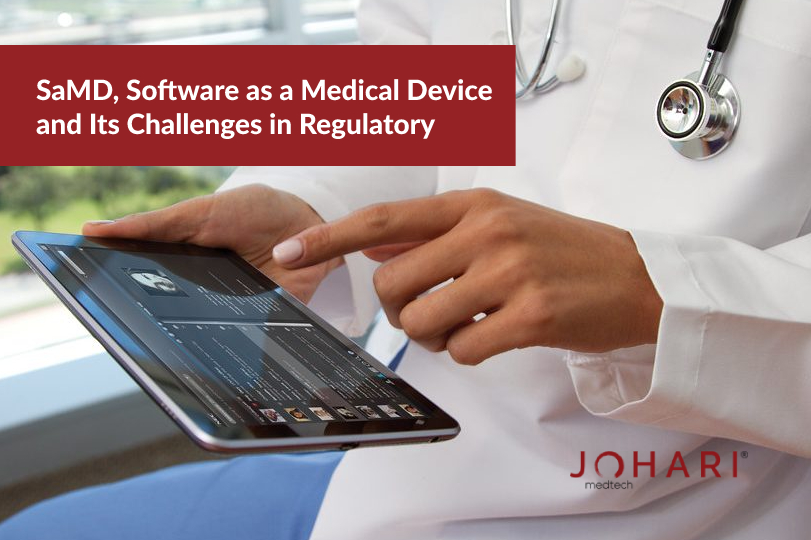What is SaMD?
As per FDA, the term Software as Medical Device (SaMD) is Defined as “software intended to be used for one or more medical purposes that perform these purposes without being part of a hardware medical device.”
Any software that helps diagnose, track, monitor, or evaluate a medical condition or state is referred to as SaMD and not a part of the hardware device.
To break it down more clearly, software on your mobile to track your sleep cycle is a SaMD but the digital device incorporated with software for measuring your Blood pressure is not considered as SaMD.
Few common examples of SaMD
- A mobile application for imaging MRI on your Mobile Phone
- Sleep detecting application that displays data and results on the mobile phone
- Software clone of the digital mammogram machine used during the breast cancer detection
- Software for monitoring the pacemaker activity on your mobile phone
Challenges in Regulating Software as Medical Devices
Software acting as a medical device makes your sensitive data accessible over the network. The challenge is to align the safety of the data while maintaining the functionality and efficiency of the product.
With diversity in the software being developed for healthcare, the security concerns are very high. Stakeholders, regulators, and various authorities at multiple levels must comply with regulations set by the FDA to fast track approval of the Software being developed for healthcare applications.
Integrating the modern product development methodology for the ever-evolving internet with the security of the backend is another major challenge. Internet is dynamic and there is no way you can eliminate the security concerns while making your product adaptable to the evolving internet. The core task is to balance innovation and adaptability without putting the user’s data at risk.
FDA Guidelines for SaMD (Software as a Medical Device)
- Software as a Medical Device must support the clinical language. The instructions must be proper and in the clinical language as mandated by the health authorities
- There must be proper recommendations and analytical data attached to the medical device for outlining potential adverse consequences
- The manufacturer or developers must also outline the adverse consequences of the SaMD
- The Software’s role, utility, clinical impact, data utilized, and sharing modes must be documented without any error
- The design, implementation, usage, or functionality could cause users to make incorrect decisions, which impacts the treatment of patients. To ensure nothing like such happens efficient testing is mandatory at multiple levels.
Software as a Medical Device is an expanding sector and with numerous individuals entering the domain, many new ideas are coming up. Developers need to balance innovation and regulatory compliance to develop smart healthcare without compromising sensitive data of the user.

